Exhibitions
Ogata Kōrin’s Opus Magnum:
Red and White Plum Blossoms meets Wind God and Thunder God
2024.11.01(Fri) - 2024.11.26(Tue)
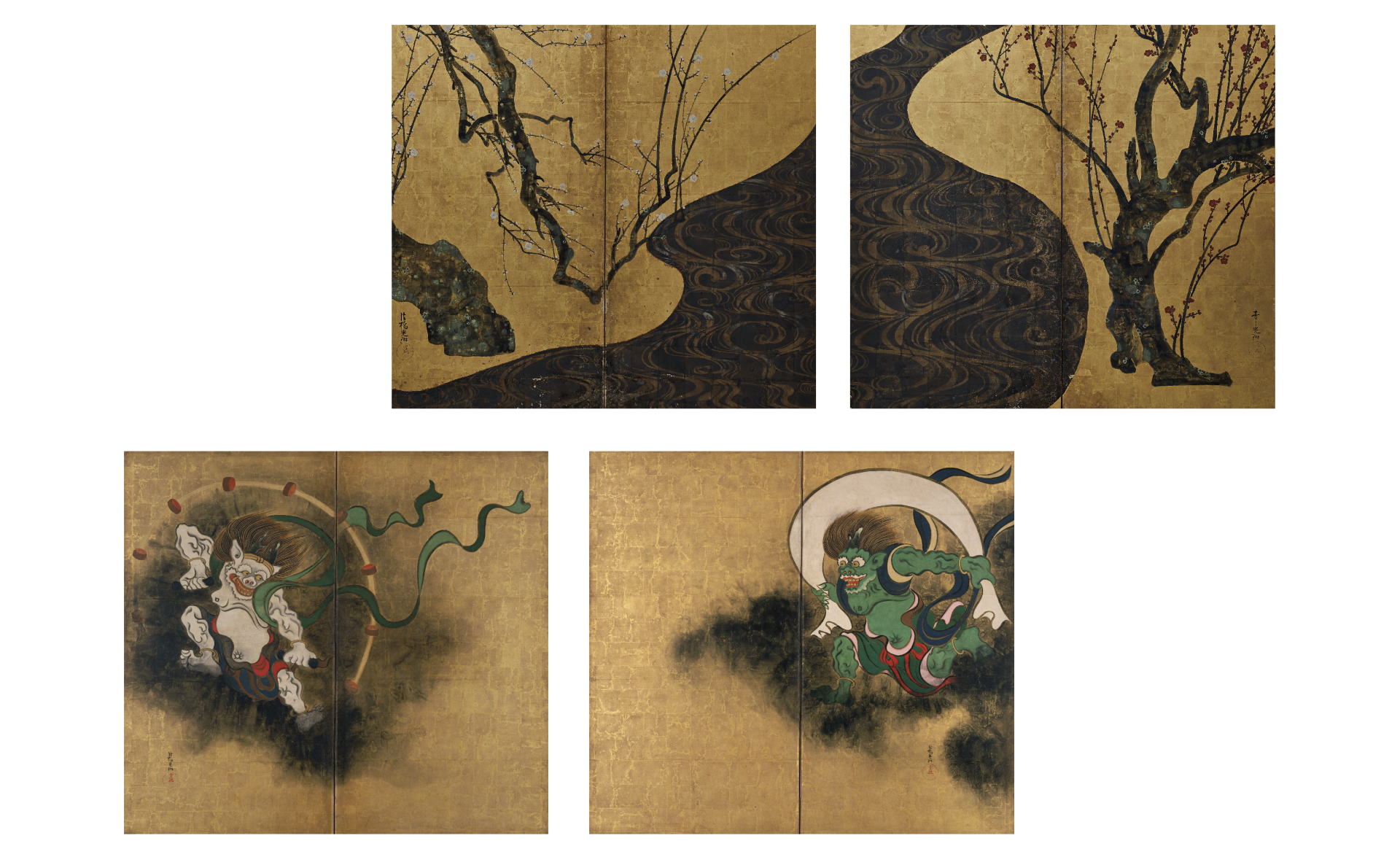
Overview
In the former, possibly one of his last works, the tension in the composition comes from the bold design in which a wide current in the middle separates the two age-old plum trees placed on each side. This work arguably represents the culmination of Kōrin’s artistic career, with the world-famous stylized designs of plum flowers and flowing water. The Wind God and Thunder God is known to be a faithful study of the same motifs painted by Tawaraya Sōtatsu (birth unknown–1643), from whom Kōrin took much inspiration. In comparison, experts point out some traces of influence observed in his later work the Red and White Plum Blossoms.
The curation of the exhibition also includes Kōrin’s other works that draw on Sōtatsu’s style as well as artworks of other Rinpa artists from the Museum collection. Some modern takes on the century-old motifs are also included to cast a fresh eye on the celebrated Thunder God and Wind God, including the painting of Yasuda Yukihiko (Toyama Memorial Museum collection) and the animation film of Inoue Ryo.
Highlight 1
Viewing Kōrin’s two folding screens in the same exhibition for the first time in 39 years

Red and White Plum Blossoms (National Treasure), Ogata Kōrin, MOA Museum of Art
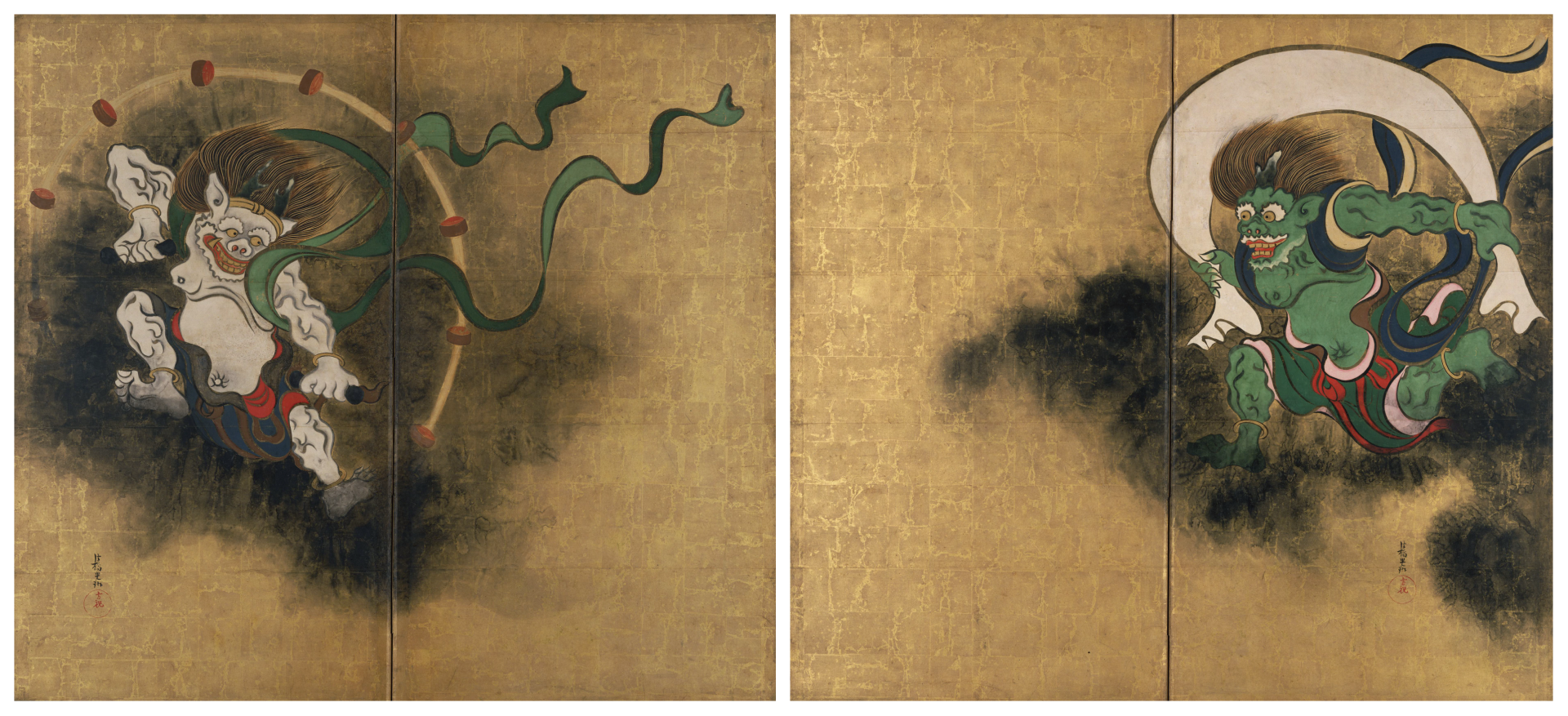
Wind God and Thunder God (Important Cultural Property), Ogata Kōrin, Tokyo National Museum
Image: TNM Image Archives
Highlight 2
Excellent work of Rinpa school artists

Bamboo and Plum Tree (Important Cultural Property), Ogata Kōrin, Tokyo National Museum
Image: TNM Image Archives

Box with fan collage, with paintings by Ogata Kōrin, The Museum Yamato Bunkakan

Kosode with design of autumn grasses, attributed to Ogata Kōrin, MOA Museum of Art
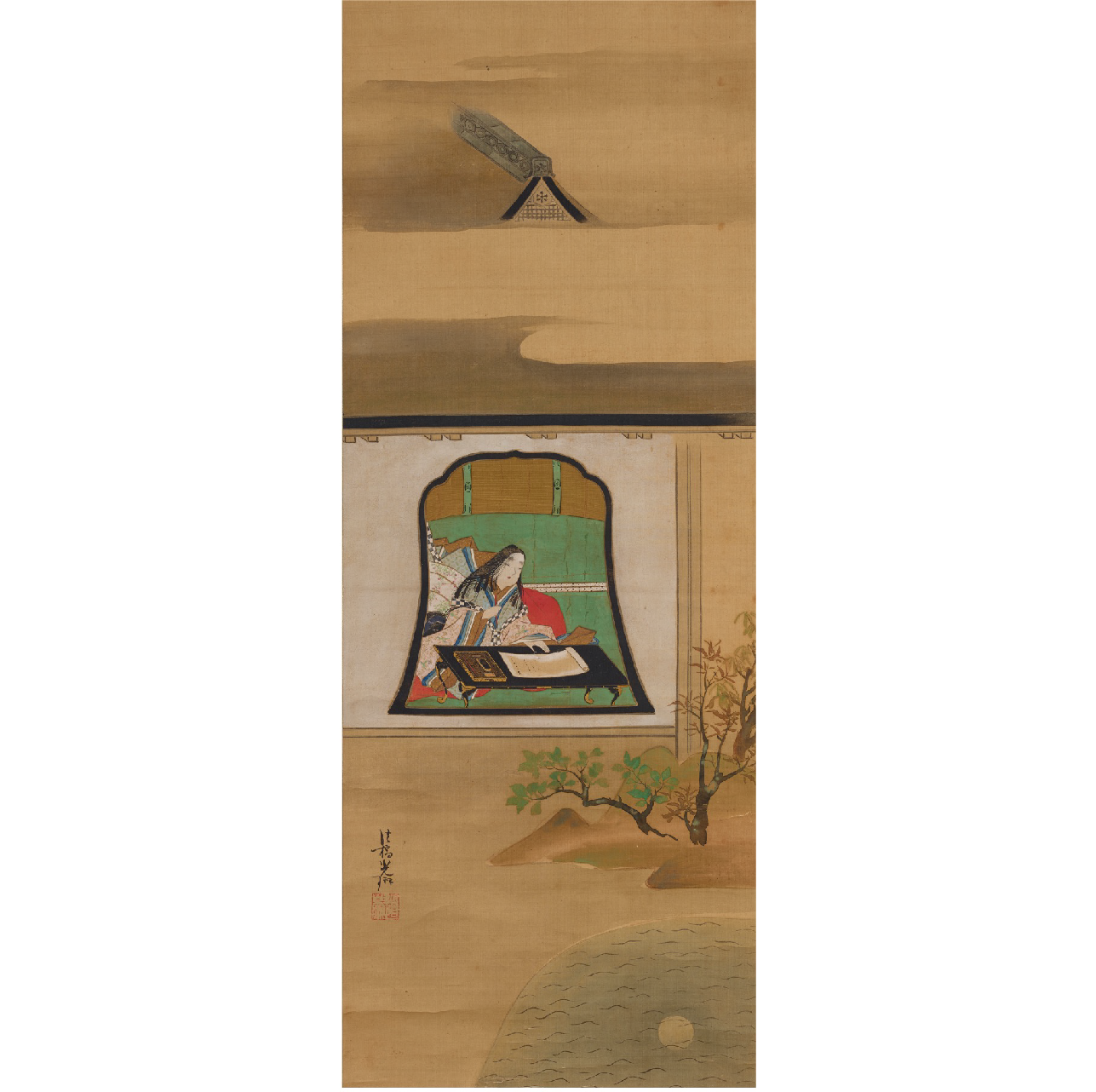
Lady Murasaki (Important Art Object), Ogata Kōrin, MOA Museum of Art
A depiction of famous Murasaki Shikibu, a poet and lady-in-waiting. As legend has it, she conceived her masterpiece, The Tale of Genji, while gazing at the moon from the Ishiyamadera temple, which is the background to this composition. Korin’s curiosity in geometry is evident in the arrangements of the window in the center, horizontal eaves, and other structural components.
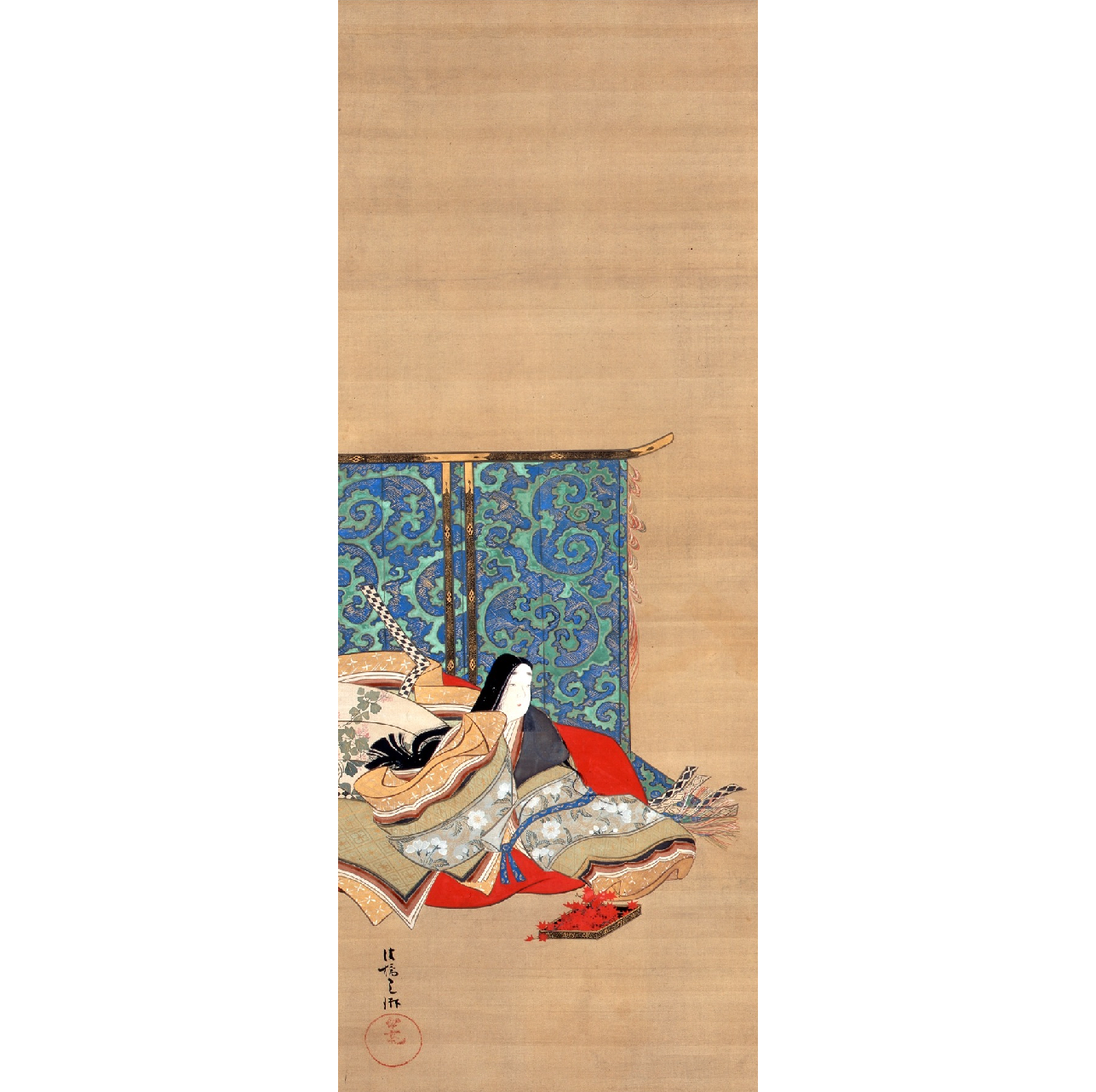
Empress Akikonomu, Ogata Kōrin, MOA Museum of Art
Inspired by Chapter “Otome” (The Maiden) of the Tale of Genji, it depicts Empress Akikonomu assembling a collage of colorful autumn leaves on a tray to be delivered to Lady Murasaki with an accompanying private message. There is an air of elegance and grace in this painting.
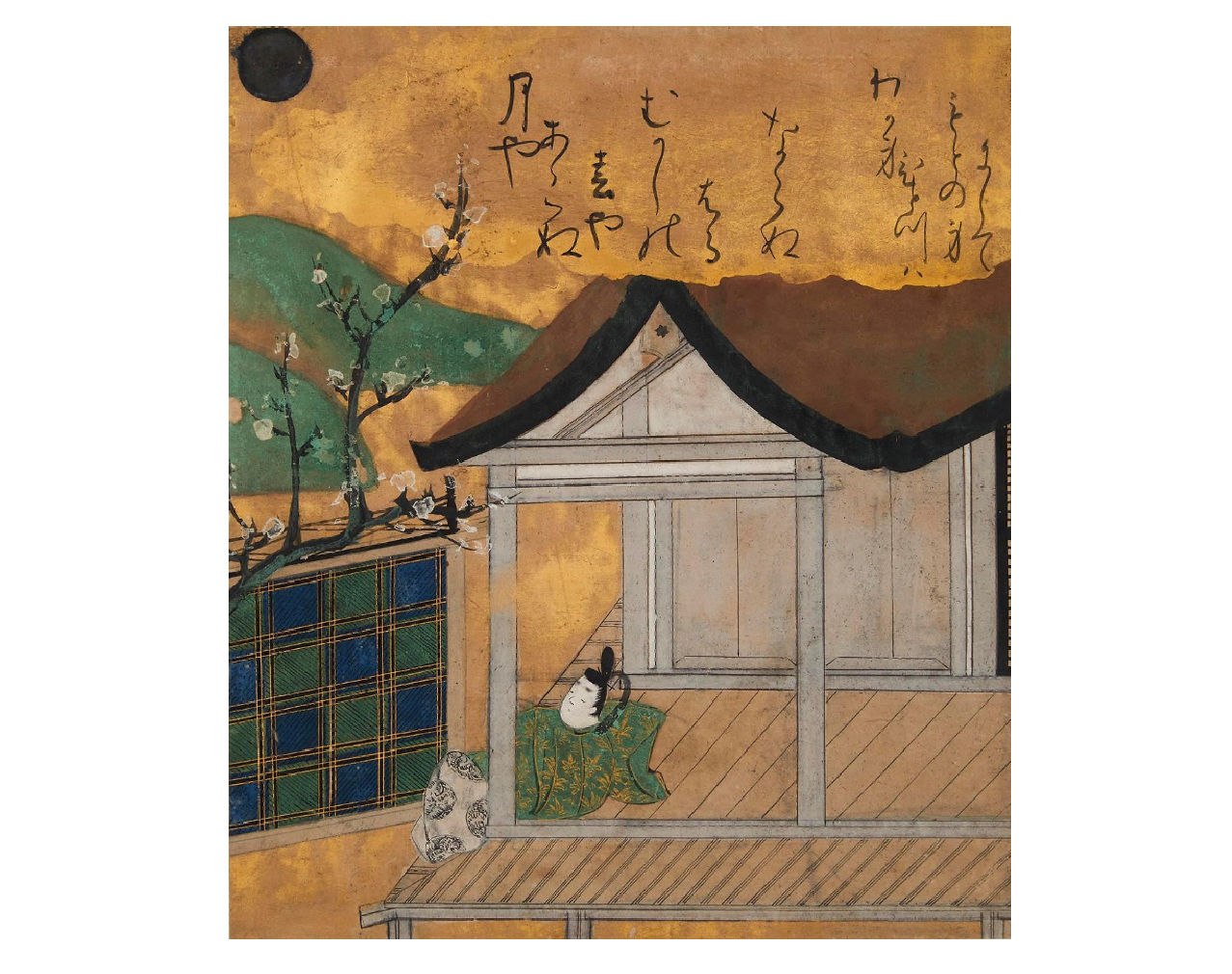
Story about Nishi-no-tai, a scene from the Tales of Ise, attributed to Tawaraya Sōtatsu, MOA Museum of Art
A scene from Chapter Nishi-no-tai of the Tales of Ise depicts a man (supposedly modeled on Ariwara no Narihira) reminiscing about a lady he was in love with while visiting her former residence. The figure in the painting is drawn in the archetypal style of “slit eyes and hook nose.” The clouds in gold beautifully crown the building and mountains.
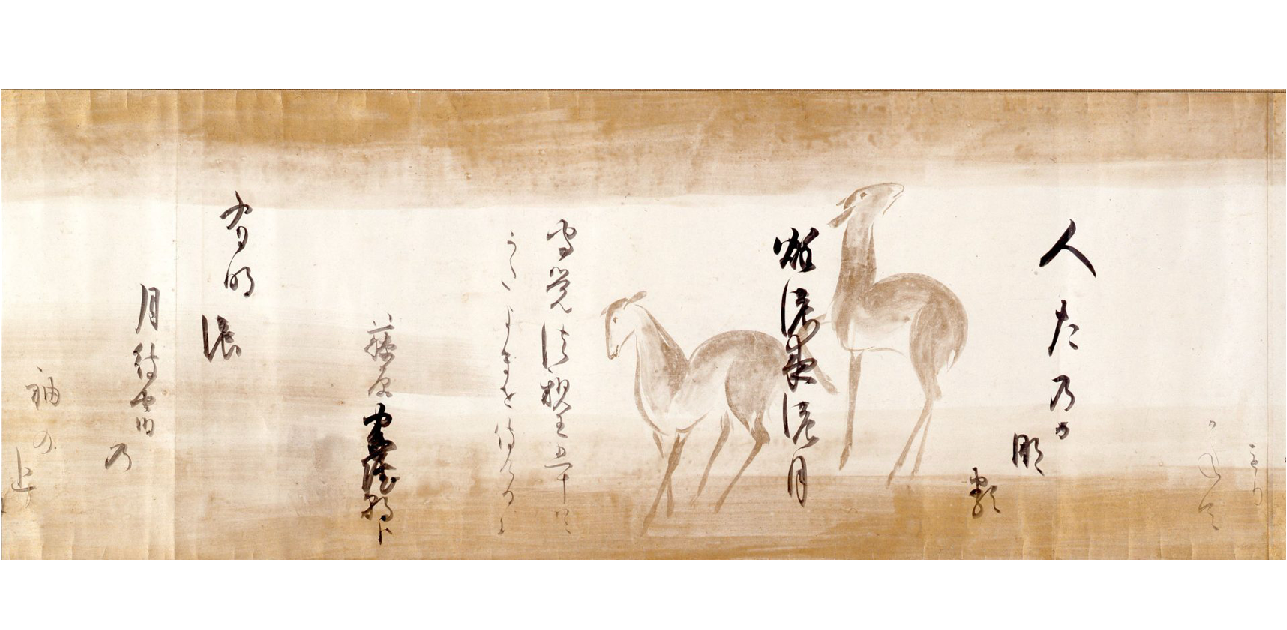
Calligraphy of poems from the Shin Kokin Wakashū on paper decorated with deer, design by Tawaraya Sōtatsu and calligraphy by Hon’ami Kōetsu, MOA Museum of Art
Shika-shitae wakakan is a roll of paper with deer drawings in gold and silver paints by Tawaraya Sōtatsu, on which Hon’ami Kōetsu (1558–1638) transcribed 28 waka poems selected from the famous anthology Shin Kokin Wakashū. The original scroll was reorganized into two scrolls and a few fragments in the post-World-War period. The calligraphy complements the design with its extraordinary, decorative hand. The scroll made from the second half of the original has been acquired by the Seattle Art Museum. It bears Kōetsu’s signature “Tokuyūsai Kōetsu” and his trademark seal.

Set of twelve square dishes with a design of seasonal motifs (Important Cultural Property), Ogata Kenzan, MOA Museum of Art
The designs of these dishes relate to the poems of Fujiwara no Teika, and their creation date inscribed on the back makes these a rare specimen of identifiable origin. The poems are written on the back, each corresponding to the motifs on the front side. His signature is found on the back of the dish that represents the twelfth month.

Snow, Moon and Flowers (Important Art Object), Sakai Hōitsu, MOA Museum of Art
“Snow, moon and flower” is a recurrent theme in Japanese art that relates to the Japanese sentiment about the appreciation of changing seasons. The triptych, when lined up, forms a linear composition, which must be a deliberate arrangement from the design point of view. Sakai was 60 when he produced these.
Highlight 3
Modern take on the Wind God and Thunder God
Some works of artists of the modern era cast light on the well-known motifs with a reflection on the contemporary world. The exhibits include paintings of the same theme by Imamura Shikō (1880–1916), Yasuda Yukihiko (1884–1978), and Tsuchiya Reiichi, as well as the animation film by Inoue Ryo.

The Wind God and Thunder God, Imamura Shikō, 1911, Tokyo National Museum
Image: TNM Image Archives

The Wind God and Thunder God, Yasuda Yukihiko, 1929, Toyama Memorial Museum
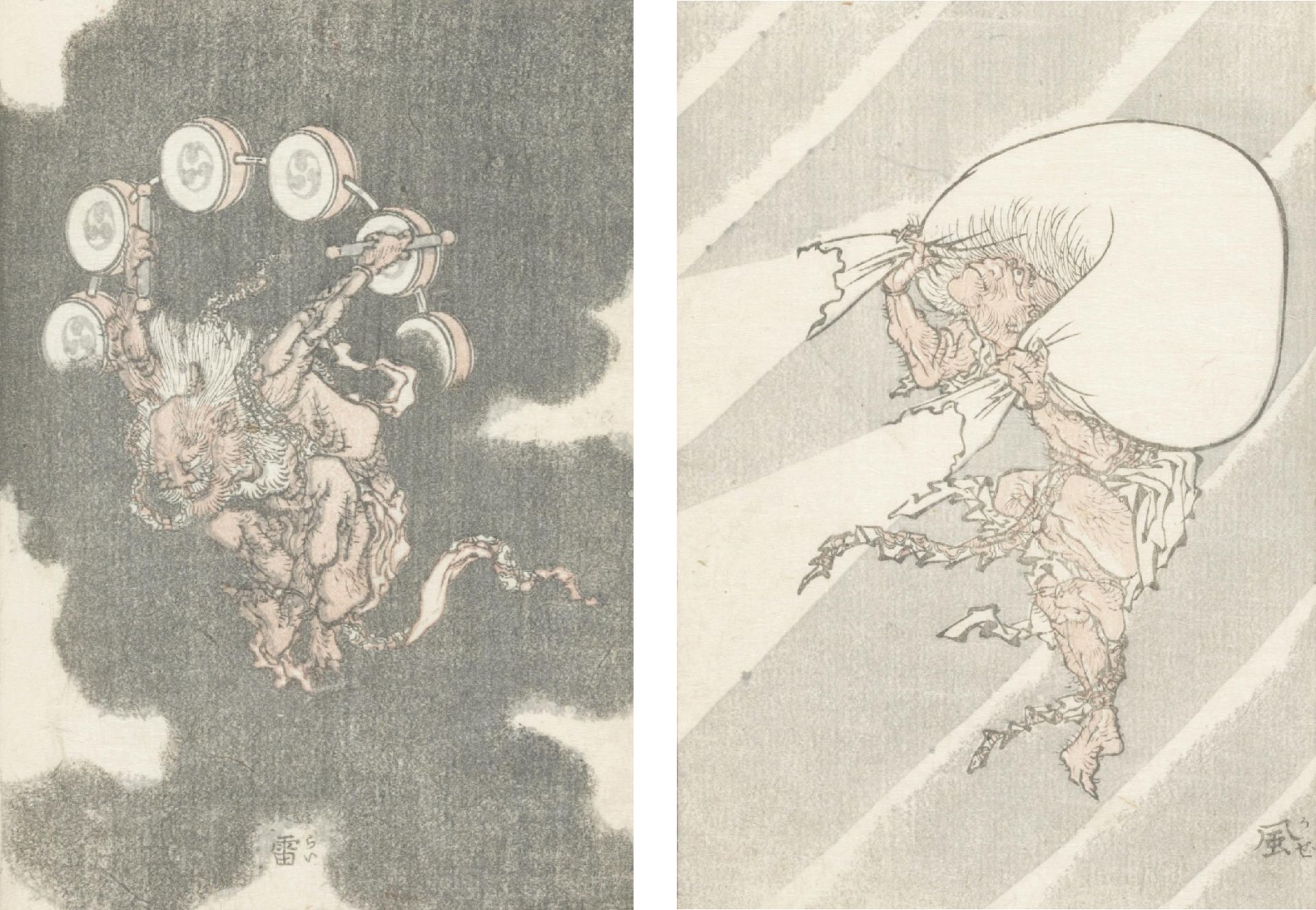
“Wind” (right) and “Thunder” (left) from Hokusai Manga Vol. 3, Katsushika Hokusai, 19th century, Edo period, private collection

The Wind God and Thunder God go on a date in gold screen, Inoue Ryo, 2020
© NHK/Inoue Ryo 2024
Highlight 4
Original digital content by the museum’s production team
An additional feature accompanies the exhibition, created by the museum’s digital production section, which contextualizes the masterpieces against the images of the reproduced Kōrin’s atelier.
